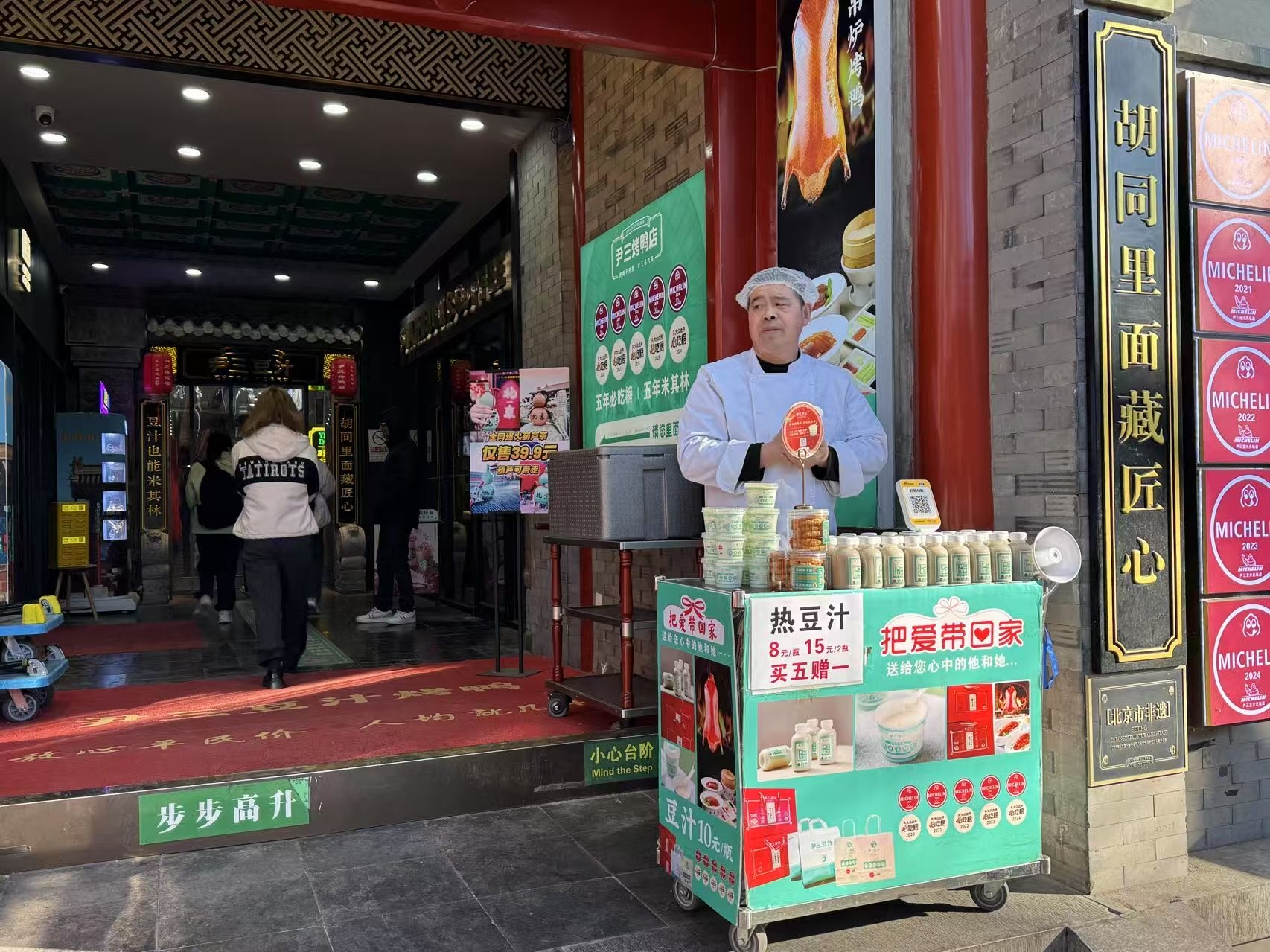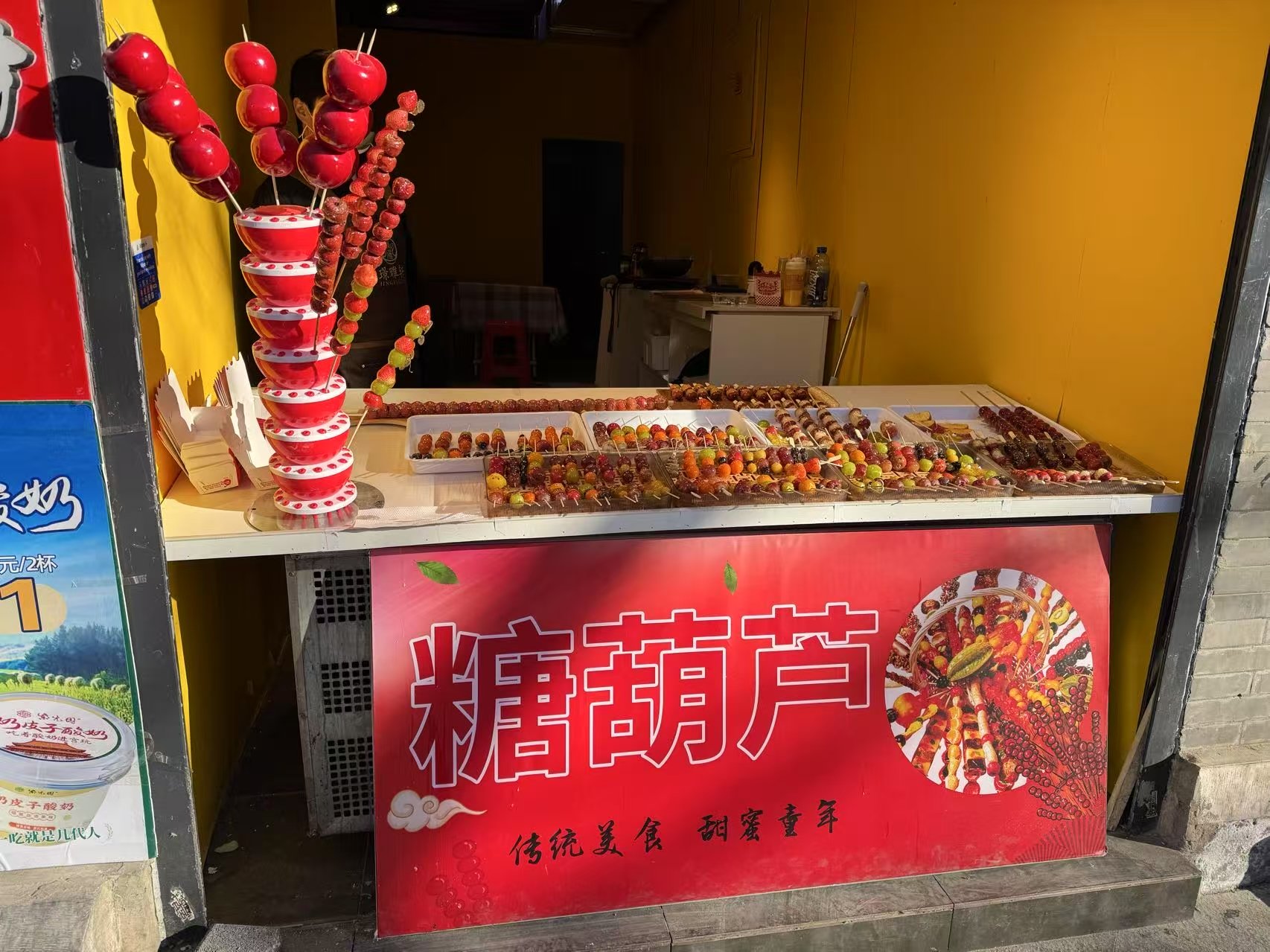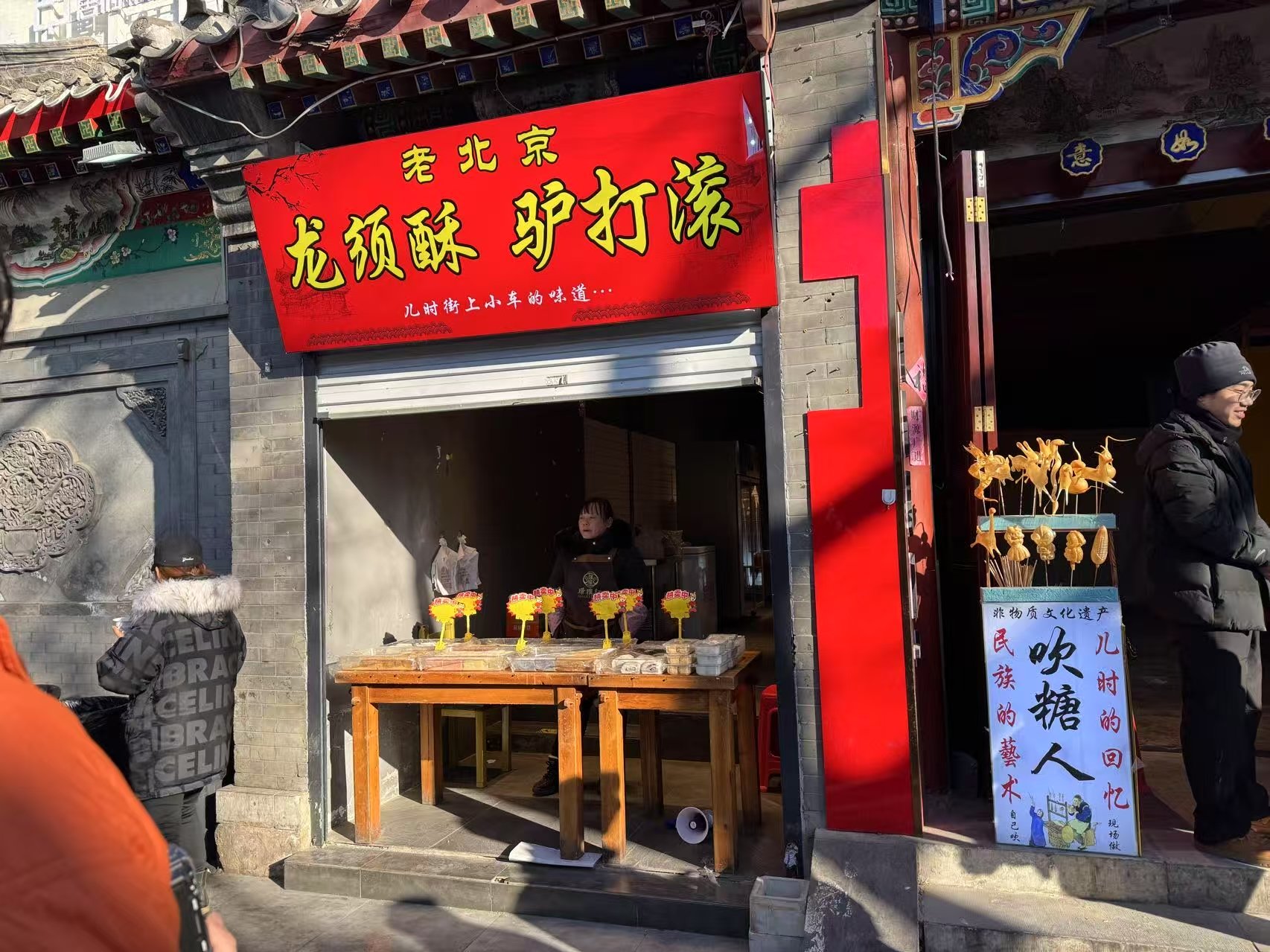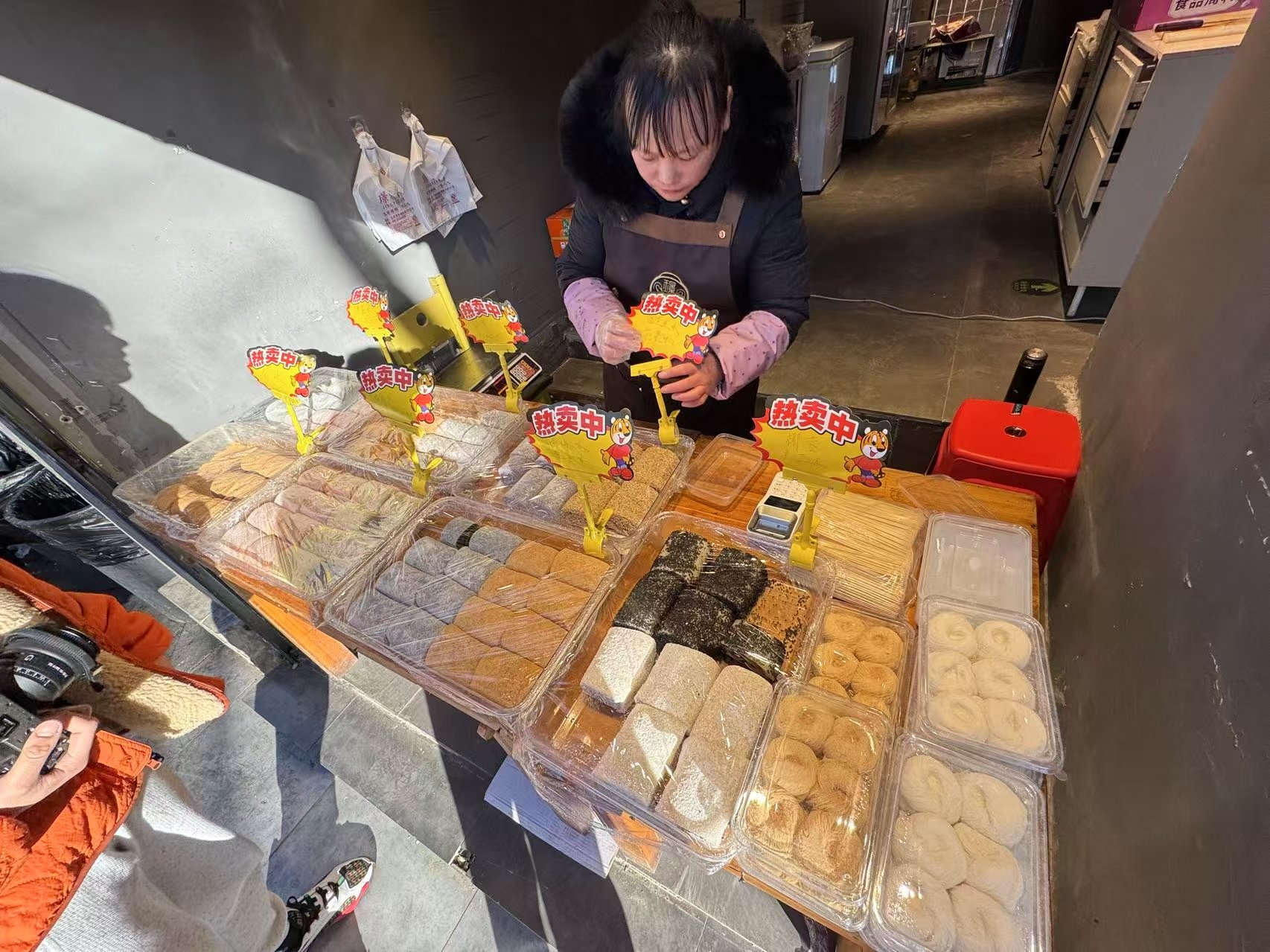Hutong Project: Bites of Beijing, Culture Through Four Snacks
I’ve lived in Beijing my whole life for 17 years, and one thing that’s always stayed with me is how closely food and culture are tied together here. This year, I’ve been revisiting some of those foods—not just eating them, but thinking about what they mean and why they matter. I have encountered four classic Beijing snacks that hold a lot of cultural weight for me in the Hutong area in Beijing.
The first photo I snapped is of 糖葫芦 (tánghúlu)—red hawthorn berries strung on a stick and glazed with a sugar sheen. To me, it's not merely a street food—it's the sign of winter holidays, family walks as a kid, and the sweet-sour balance that encapsulates so much Chinese flavor philosophy. Tanghulu has been peddled in Beijing streets for over a century, typically outside temple fairs or school entrances. Sharing this treat with individuals of other cultures tends to generate interest, and it reminds me that something as simple as a sweet on a stick can lead to bigger discussions about tradition, health, and flavor.
Another dessert rich in Beijing culinary tradition is 驴打滚 (lǘ dǎ gǔn), or literally "rolling donkey." This delicate, glutinous rice roll, coated with soybean flour and filled with sweet red bean paste. The name took its cue from the motion of the roll "rolling" in the soybean flour, as if raising dust like a donkey. The process of making it is soft and meticulous. The process of consuming 驴打滚 reminds me how tradition resides in the details, and how simple foods can be acts of cultural preservation. It also reminds me to appreciate the labor that has been put into the heritage of different places, and the back story behind.
One such dish that even locals find is often contentious is 豆汁 (dòuzhī), which is a fermented mung bean drink specific to Beijing. Its earthy, sour taste has the effect of polarizing individuals, and it is normally served with fried dough sticks or pickled vegetables. For many people today, it's a flavor that's out of date or undesired. For me, I personally do not like it, but seeing many tourists willingly trying this outdated cuisine really made me realize the importance of embracing different cultures.
Lastly, I photographed 年糕 (niángāo), a glutinous rice cake eaten traditionally during Lunar New Year. The name is a homophone for "higher year," which represents advancement, development, and triumph in the upcoming year. While 年糕 is used largely for celebratory holiday times, it also shows up in regular meals, served sweet or salty depending on where one lives. What impresses me is how such a simple meal can have so much cultural significance. In sharing 年糕 with others, I’ve seen how universal the desire for hope and prosperity is, no matter the country or culture. It’s another example of how traditions, even when deeply local, often express values that are globally understood.
Looking back at these four snacks, I’ve realized how much culture is wrapped up in the everyday things we eat. Through this experience, I’m not just trying to preserve parts of Beijing’s culture—I’m also trying to share it in a way that invites people to be open and curious about traditions that might be totally new to them.
By Ted Wang



